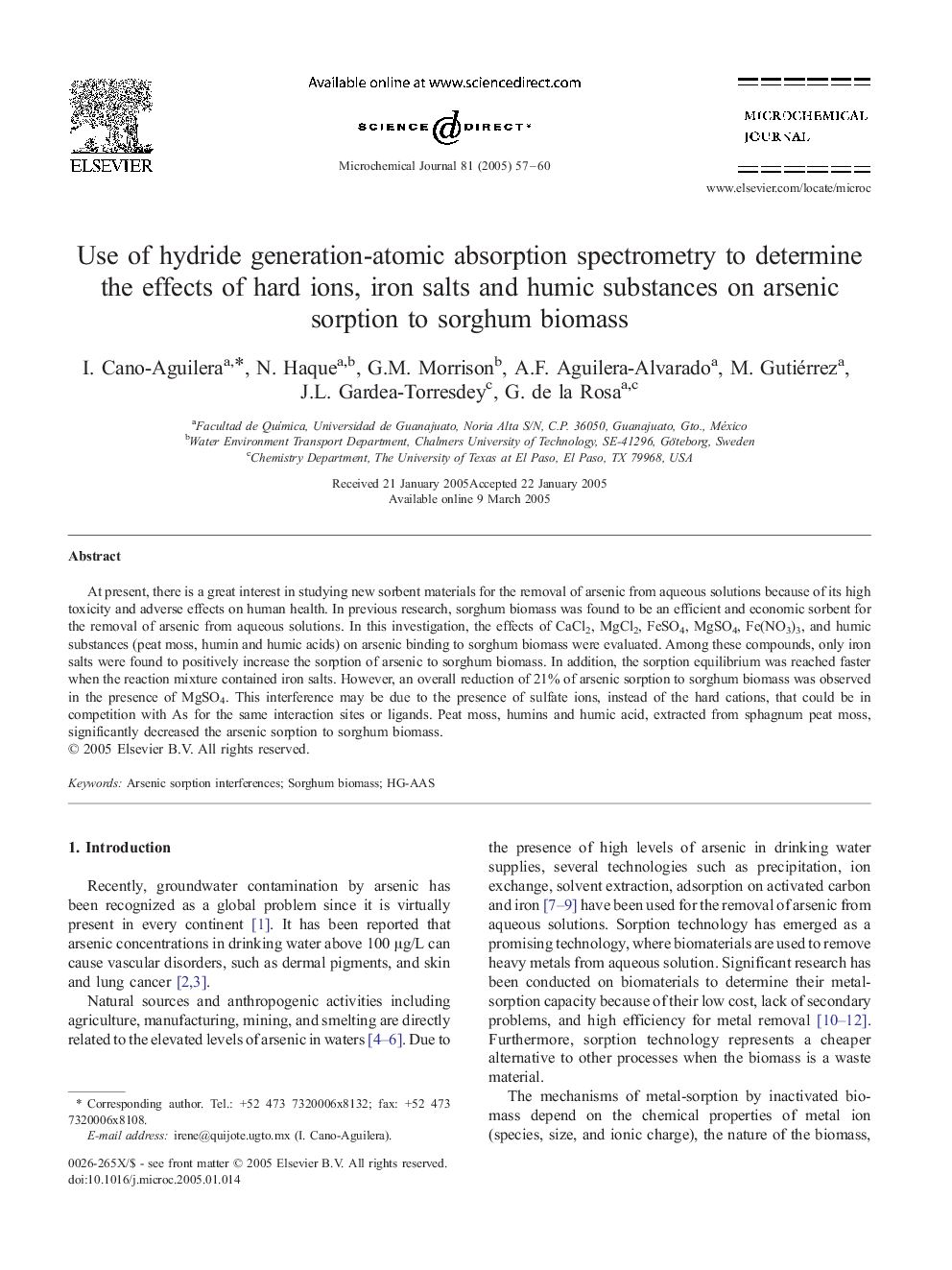| Article ID | Journal | Published Year | Pages | File Type |
|---|---|---|---|---|
| 10557219 | Microchemical Journal | 2005 | 4 Pages |
Abstract
At present, there is a great interest in studying new sorbent materials for the removal of arsenic from aqueous solutions because of its high toxicity and adverse effects on human health. In previous research, sorghum biomass was found to be an efficient and economic sorbent for the removal of arsenic from aqueous solutions. In this investigation, the effects of CaCl2, MgCl2, FeSO4, MgSO4, Fe(NO3)3, and humic substances (peat moss, humin and humic acids) on arsenic binding to sorghum biomass were evaluated. Among these compounds, only iron salts were found to positively increase the sorption of arsenic to sorghum biomass. In addition, the sorption equilibrium was reached faster when the reaction mixture contained iron salts. However, an overall reduction of 21% of arsenic sorption to sorghum biomass was observed in the presence of MgSO4. This interference may be due to the presence of sulfate ions, instead of the hard cations, that could be in competition with As for the same interaction sites or ligands. Peat moss, humins and humic acid, extracted from sphagnum peat moss, significantly decreased the arsenic sorption to sorghum biomass.
Keywords
Related Topics
Physical Sciences and Engineering
Chemistry
Analytical Chemistry
Authors
I. Cano-Aguilera, N. Haque, G.M. Morrison, A.F. Aguilera-Alvarado, M. Gutiérrez, J.L. Gardea-Torresdey, G. de la Rosa,
